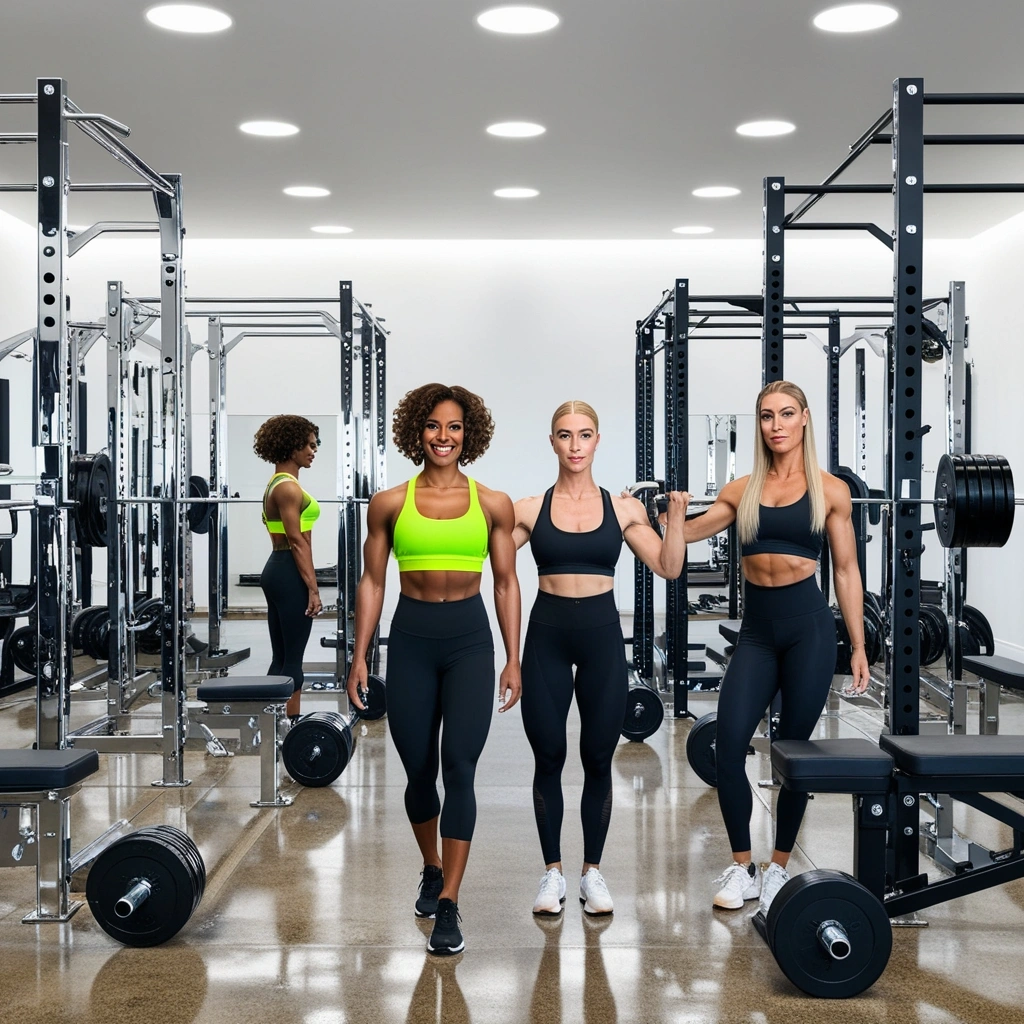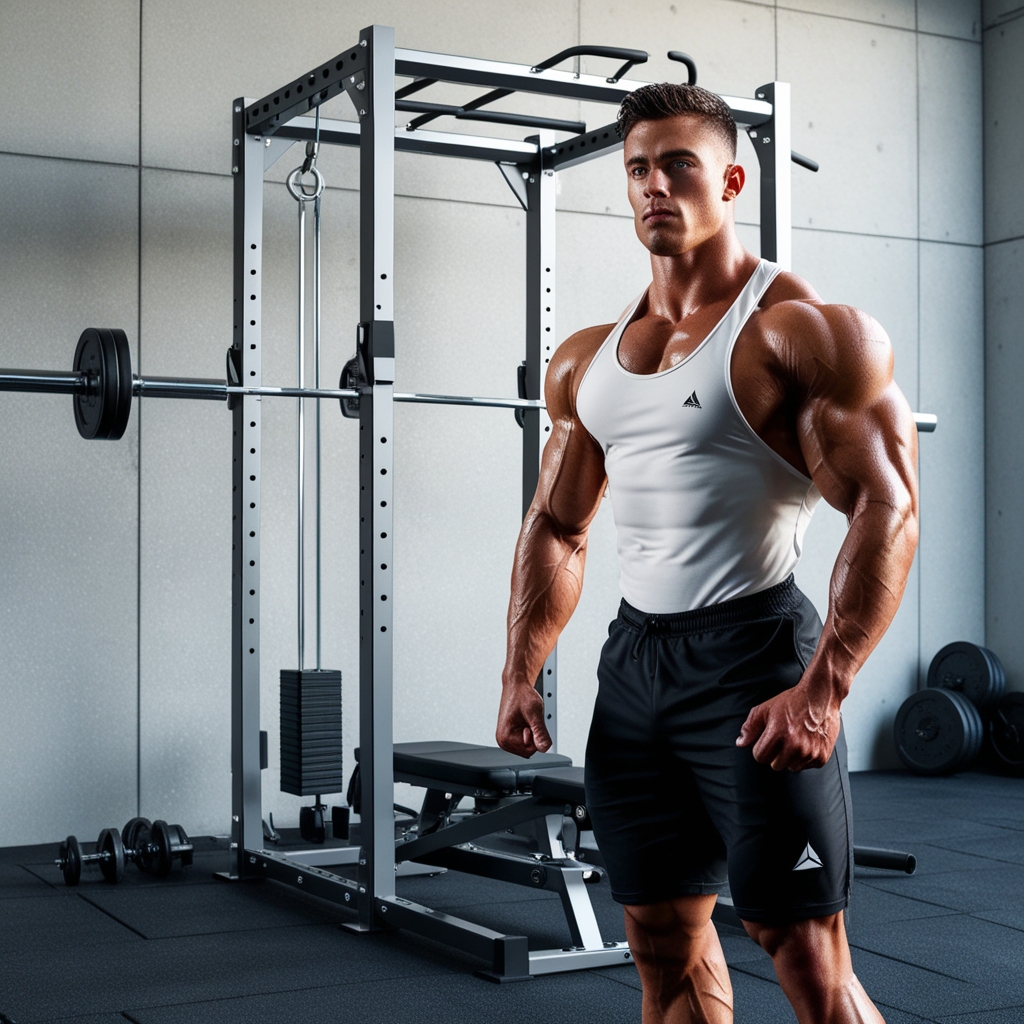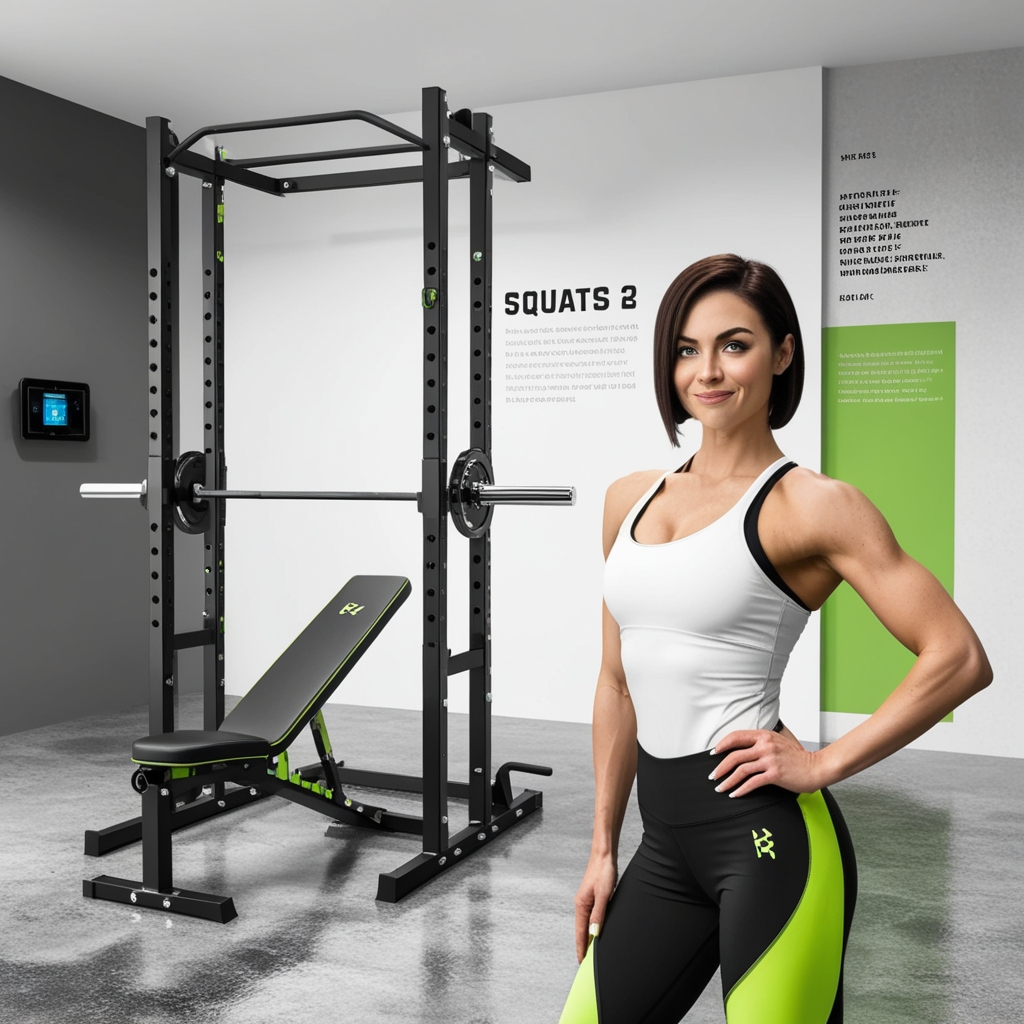Do you want a strong home gym? Forget fancy machines, you need a squat rack and bench. Why? This stuff lets you work out safe and sound, without needing a spotter. Plus, it’s not just for squats and lifting weights on your chest.
You can do tons of exercises with this rack, all in one place. It’s like having a whole gym packed into a couple of metal bars! With a squat rack and bench, your home workouts can be just as good as going to a fancy gym, maybe even better.
Explanation of What a Squat and Bench Rack Is
The squat and branch rack is like a jungle gym for grown-ups. It’s a metal frame that holds weights so you can lift them safely, by yourself. You can squat under it, press weights up on a bench, or even hang from it like a monkey!
This rack lets you do all sorts of exercises without needing someone to watch you, so it’s perfect for your Home Gym. Squat and bench racks provide a safe and stable platform for lifting weights.
They let users do compound exercises with heavy loads while reducing the risk of injury. The J-hooks’ height is adjustable. This allows for customization to fit different body sizes and exercise types. It makes the rack suitable for all fitness levels.
Benefits of Having a Squat and Bench Rack in Your Home Gym
Safety: A squat and bench rack provides a safe place for heavy lifting. It is for exercises like squats and bench presses. The rack reduces the risk of injury by having adjustable safety bars or spotter arms. These catch the weight if it falls.
Versatility: A squat and bench rack lets you do many exercises. They target different muscles, including squats, bench presses, overhead presses, rows, and pull-ups. You can do more exercises too. This allows for a full-body workout.
Convenience: Having a squat and bench rack at home eliminates the need to travel to a gym, saving time and money in the long run. You can work out whenever it’s convenient for you. You won’t need to wait for equipment or deal with crowded gyms.
Space Efficiency: Squat and bench racks are compact. They are designed to fit into small home gyms. This makes them ideal for those with limited space for exercise equipment.
Progress Tracking: A squat and bench rack makes weightlifting easier. It allows for small changes in weight and resistance. These help you track your strength gains over time.
Independence: With a squat and bench rack, you can work out alone. You don’t need a spotter. This gives a sense of independence and empowerment in your fitness journey.
Cost Savings: The initial investment in a squat and bench rack may seem big. But, it can save money in the long term compared to gym fees and commuting.
Customization: Many squat and bench racks have adjustable features. These include height settings and attachments. They allow you to customize the racks to fit your workout and body.

Overview of Different Types of Squat and Bench Racks Available
Standard Squat and Bench Rack: This type of rack has a sturdy frame. It has adjustable J-hooks or spotter arms. It’s made for simple squatting and bench pressing. It has stability and safety features.
Power Rack or Power Cage: A power rack, also called a power cage, is like a standard squat and bench rack. But, it has extra safety features.
These features include horizontal safety bars all around the rack. This makes solo lifting safer. It also allows for a wider range of exercises. These include squats, bench presses, pull-ups, and more.
Half Rack: A half rack is a compact version of a power rack, with a smaller footprint. It’s suitable for smaller home gym spaces or users who don’t require the full capabilities of a power rack.
Foldable Squat and Bench Rack: Foldable racks are designed for easy storage and portability. They can be folded up when not in use. This makes them great for users with limited space or who need to move their equipment often.
Wall-Mounted Squat and Bench Rack: Wall-mounted racks are mounted on the wall. They save floor space and provide a sturdy platform for lifting. They’re ideal for users who want a permanent and space-saving solution for their home gym
Adjustable Squat Stands: Squat stands are a minimalist alternative to full racks. They consist of two adjustable stands with J-hooks or spotter arms. They offer a flexible setup. They are good for users who want simplicity and versatility.
Smith Machine: Smith machines are not technically a squat and bench rack. But, they do have a guided barbell system within a rack-like structure. They add stability and safety for lifting. However, they may limit natural motion more than free weights.
Factors to Consider When Choosing a Squat and Bench Rack for Your Home Gym
Space Availability: Measure your home gym’s space. Ensure the rack fits well and won’t crowd it. Consider the rack’s height, width, and depth. Also, consider the extra space needed for safe exercise
Weight Capacity: Check the rack’s max weight. It must support the barbell’s weight and any added plates. Choose a rack with more capacity than you need now. This will allow for future progression.
Adjustability: Look for a rack with adjustable features such as J-hooks, spotter arms, and safety bars. You can adjust the height. This allows for customization to fit different exercises and user heights.
Safety Features: Squat rack. Strong. No break. Safe catches. No weights fall. You lift heavy. No hurt.
Stability: A stable and sturdy rack is essential for safe and effective workouts. Choose racks with wide bases. They should be heavy-duty and have secure floor anchoring options. This will reduce wobbling or tipping during exercises.
Versatility: More exercises, better rack. Do many things. Pull-up bar too. Weights need a home. Want to dip? Get bars for that. This rack, it does all.
Budget: Money for the rack. How much do you want to spend? What you need, that’s most important. Fancy rack, more expensive, does more things. Just starting? A cheaper rack is okay too. Lift weights, and get strong. That’s all you need.
User Reviews and Reputation: Other lifters try rack first. They tell you if good or bad. Big companies make strong racks. Warranty protects your money. Like car insurance, but for the rack.

Safety Features to Look for in a Squat and Bench Rack
Adjustable Spotter Arms or J-Hooks: Make sure the rack has adjustable spotter arms or J-hooks. They should be able to be set at different heights. They catch the barbell if you fail a lift.
This feature provides a safety net during exercises like squats and bench presses. It reduces the risk of injury. Safety Pins or Safety Straps: Some racks have safety pins or straps.
They can be put into the rack’s uprights at various heights. These pins or straps add safety. They stop the barbell from dropping too far in a failure. They give extra protection during heavy lifting.
Sturdy Construction: Look for racks made of heavy-duty steel or metal. They should have strong welding and extra reinforcement at stress points.
The rack has a sturdy construction. It can handle heavy loads without wobbling or tipping over. This enhances stability and safety during workouts.
Wide Base and Secure Anchoring: Wide base for rack. No wobble! Safe lifting. Lift heavy? Bolt to the floor. Extra safe
Rubberized or Protective Padding: Some racks have rubber or protective padding. It’s on the J-hooks or spotter’s arms. It stops damage to the barbell and reduces noise when adjusting the rack. The padding also cushions the barbell. It keeps it from slipping or shifting during exercises.
Weight Capacity: Make sure the rack can hold more weight than you’ll lift. This includes the weight of the barbell and any added weight plates. Choosing a rack with a higher weight limit adds safety. It prevents overloading.
Clearance Space: Check that the rack has enough space around the lifting area. You need this space to do exercises safely and comfortably. Avoid racks with limited space. They may restrict movement and raise the risk of injury during lifts.

Tips for Properly Using a Squat and Bench Rack to Prevent Injuries
Warm-Up: Always start your workout with a proper warm-up. It prepares your muscles and joints for exercise. Dynamic stretches and light cardio can increase blood flow. They also boost flexibility and cut the risk of injury during lifting.
Learn Proper Form: Before using the squat and bench rack, learn the proper form and technique. Learn for each exercise you plan to do. Focus on keeping a neutral spine. Use your core and breathe right. These things will help your movements and prevent strain.
Start with Light Weights: Start your workout with lighter weights. Use them to warm up and practice proper form. Then, gradually increase the load. Don’t lift weights that are too heavy. It raises the risk of injury.
Use Spotters or Safety Features: Lift big weights? Need help! Get a spotter, someone strong to watch you. The rack has safety arms too. They catch the bar if you can’t. Don’t be a hero. Lift safe, lift strong.
Adjust Equipment Properly: Adjust the height of the J-hooks or spotter’s arms to the appropriate level for your exercise and body size. Make sure the safety bars or straps are set at a height. This height lets you move fully and protects you if you fail.
Perform Controlled Movements: Focus on doing each repetition with smooth movements. Avoid jerky motions. They can strain muscles or joints. Maintain proper alignment throughout the exercise and avoid hyperextending or locking out joints.
Listen to Your Body: Pay attention to your body’s signals. Stop exercising if you feel pain or discomfort. Pushing through pain increases the risk of injury and can lead to long-term damage. Rest and seek medical attention if necessary.
Incorporate Recovery Days: Rest enough between workouts. This prevents overtraining and cuts injury risk. Switch between muscle groups. Also, rest days let your body repair and rebuild muscle.
Progress Gradually: Push more. Lift heavier. But slow. Muscles get sore if you go too fast. Make them grow stronger, bit by bit. More weight, more reps, that’s the way. Get strong, but be careful.
Stay Hydrated and Fuel Your Body: Drink plenty of water before, during, and after your workouts. This will keep you hydrated and help you perform your best. Eat a balanced diet. It should be rich in nutrients. It will fuel your workouts and aid muscle recovery and repair.
Conclusion
Investing in a squat and bench rack for your home gym is a smart decision. It can greatly improve your strength training. It also makes it safer and more effective. We’ve explored the many benefits of adding a squat and bench rack to your home gym.
They include safety, versatility, convenience, and cost savings. It provides a secure and stable platform. You can do a wide range of exercises on it, like squats, bench presses, and pull-ups.
A squat and bench rack offers the chance to achieve your fitness goals. And, it lets you do so safely and efficiently. The racks are adjustable and safe. They are also sturdy. They are in modern squat and bench racks.
They let people of all fitness levels have a challenging and rewarding workout. And, they do this without compromising on safety. Also, the squat and bench rack makes home gyms more convenient.
It removes the need for expensive gym memberships and long commutes. And it spares you from crowded workout spaces. You can exercise on your schedule and customize your workouts with a squat and bench rack.
It empowers you to control your fitness journey and make progress towards your goals. In conclusion, buying a squat and bench rack for your home gym is not just about adding gear. It’s about investing in your health, well-being, and long-term fitness.
Strong at home! Squat rack, your new friend. Safe lifting, many exercises, all in one place. Are you new? Great! The rack helps you get strong. Been lifting for years? Rack pushes you further. Home gym, strong body. Get a rack, change your life. Be the best you can be.

